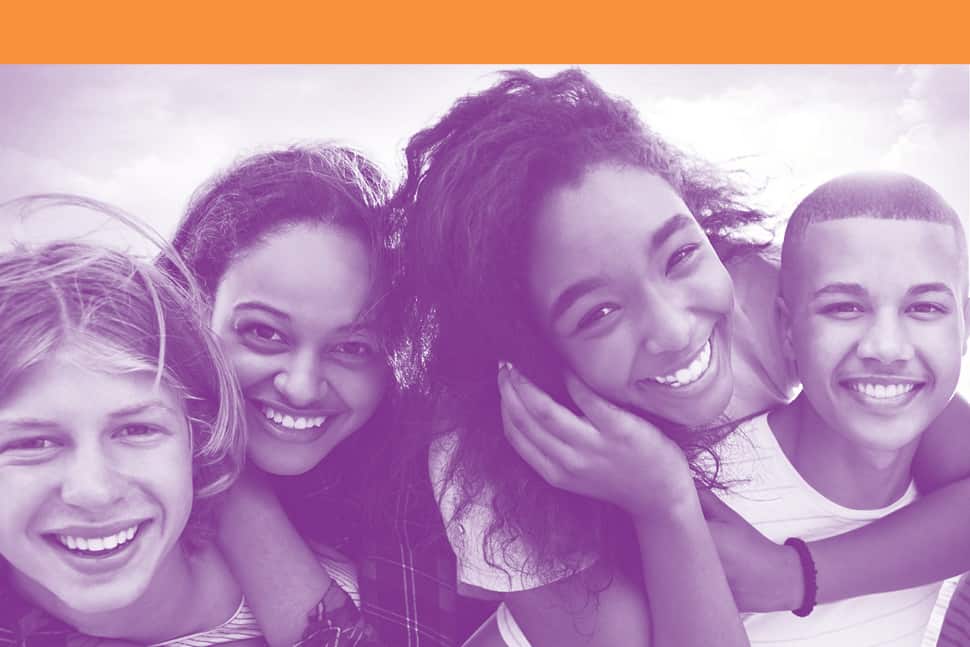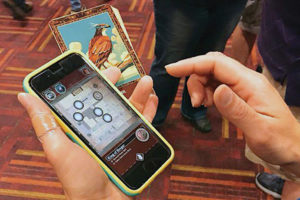
Let’s face it: Teens can be a hard bunch to reach. With sports, camp, jobs, summer school, family vacations, band camp, and other activities keeping them busy during the summer months, they might not think of the library as an important destination. But with the right tools and a solid plan, your summer learning program can be a success.
Know your audience
Who do you want to know about summer learning? Parents and caregivers? Teachers? The teens themselves? Other organizations serving youth in the community?
While the answer is undoubtedly all four, think about your library and community. How does word get around about your events? Maybe it’s from parents reading your quarterly newsletter who then register their teen. Or it’s teachers who graciously post your fliers in their classrooms. Perhaps community organizations pass out information at their events. Or your teens simply come into the library and see the information for themselves.
While there’s no reason not to hope for all those scenarios, put your energy into the path the information usually follows. If social media still reigns with parents and teens in your community, use that. If it’s still traditional paper fliers, keep that going. You’ll reach the largest audience, and you can devote the rest of your time to reaching more and more of the underserved each year.

Being more inclusive
This is a harder question but one that needs to be addressed. To build awareness, you’ll need to reach historically underserved communities. Perhaps once entering high school, those students disappear from your library. Why? Are the events offered targeted to a younger group, or perhaps the marketing is aimed at too young an audience? Is the summer learning program too difficult for them to complete alongside their other responsibilities? Are there other teens who could benefit from an option that doesn’t require them to physically be in the building? Can those in juvenile detention complete the program? What about younger teens or those who are homebound? What about teens who don’t speak English as a first language, are homeschooled, or are homeless?
While it’s always great to have “regulars” who participate, summer learning will have the biggest impact if you are as inclusive as possible. Try collaborating with local organizations to get the word out. You can head to the US government’s youth.gov website and use its “Map My Community” tool to find local and national organizations that assist underserved youth. Partner with your local school’s resource officer or your community’s homeless-education liaison to find these populations and learn about the challenges they face. Then create a plan to reach these teens.
The tricky art of design
As with all things related to teens, design can be a tricky thing to get right. You’ll turn off older teens if it looks too young, but you’ll also lose their interest if you use too many bright colors and appear as though you’re trying too hard. Also note that teens’ interests can change quickly. While most libraries don’t have money to research teens’ preferences, we can look to those brands that are already doing this well. Who is attracting teens? Why? What can you take from a brand’s marketing—advertising, colors, and so on?
Even with that information, be sure to look to your teens. If you have a teen advisory board or similar group, ask them for input on brands that are popular among the students at their schools. Remember: What is popular among teens in New York City may not be the same for teens living in rural Ohio.
Choosing your media
What type of advertising works best with your teens? Do they like to walk into the library and see a big poster, or do they like bookmarks to use for their newest selections? Consider large signage, postcards, or something altogether unique for your location and audience. Sometimes different events require different sizes—a weekly event may only need to be a reminder on your calendar, but a special one-time-only event might deserve a full-color poster as well as an 8.5-by-11-inch flier.
Whatever format you choose, it must be eye-catching, simple, and speak to the audience you hope to reach. If your event is fandom-related, let that fandom guide you with fonts and images—use movie posters, book covers, and other marketing tools for inspiration. For instance, a flier made to look like the TARDIS for a Doctor Who event will immediately capture the attention of those fans and help create excitement.
If there are several libraries nearby, be sure to clearly state at which library the event will be taking place. When it comes to wordage, less is more. Hopefully, the event title will speak for itself and your design will be all you need to create interest.
As for images, use only high-resolution ones. Don’t go to Google images and type what you’re looking for—you can often find much better free graphics at sites like iconfinder.com, openclipart.org, freeimages.com, or morguefile.com. You can also find great images at deviantart.com and flickr.com as long as you search for Creative Commons–licensed images. Another option is images.google.com—under Tools, choose “Usage rights,” then “labeled for reuse with modification” and “size: large.” (For more low-budget design ideas, read “Cutting Out the Clip Art” in the Sept./Oct. 2018 issue of American Libraries.)
If your summer learning program is new, you might consider working with communications, marketing, or graphic design students at a local university to create a logo and marketing campaign. Another idea is to enlist the teen advisory board or a similar group at your library and have them create the marketing or, at the very least, get their input on such things as color, design, and language.
Social media
No one can deny the potential power of social media. A post can go viral quickly without explanation, reaching numbers some of us can only dream about. In order to fully leverage this tool, however, it must be understood. Social media isn’t just an advertising tool—it helps you connect with your community. While you can certainly use social media to market events, be certain that it’s not the only thing for which you use it. Rather than simply posting event information, give your followers a task within the post, such as:
- Which movie do you want to watch during the after-hours event? Don’t forget to register by Friday.
- Which cosplay character will you dress up as at our annual anime event? Post a picture in the comments.
- Reminder: Your summer learning booklet is due by Monday. What was the most interesting thing you learned this summer?
- Don’t forget that Game Night is every Thursday at 5 p.m. What was your favorite game from last week?
- We just got new supplies for next week’s Crafts and Cartoons. What do you think we’re going to make with them?
Such content creates connections, and you can learn from the responses. Even if no one engages with your post, at the very least it will feel less like an advertisement and more like an interaction.
Before you decide to jump into the social media game, talk to your teens about which social media accounts they use. With so many options, it’s easy to feel like you need to do them all. Effective social media takes time, so don’t stretch yourself too thin. If you have very few followers on Twitter but you have hundreds of followers on Instagram, perhaps Twitter is not popular in your community and therefore not worth your time. Or if you are mostly reaching parents and other adults on Facebook, tailor those posts to that audience.
The power of persuasion
“Nothing influences people more than a recommendation from a trusted friend,” Mark Zuckerberg once told a group of advertising executives and reporters (The New York Times, Nov. 7, 2007).
The best way to convince a teen to participate is to encourage good-natured peer pressure. Empower your teen regulars, teen volunteers, or teen advisory board members to act as ambassadors, and invite them to tell their friends and help their beloved library.
Some ideas:
- Create shirts for teens to wear to school to promote summer learning. These could be professionally printed or created with paint and stencils by your teens.
- Ask teens to take fliers to all those places within the community where they know their peers hang out.
- Give fliers and other information to schools via the teens, rather than through you and other adults.
- Host a Social Media Teen Takeover for a day, a month, or maybe all summer. Perhaps running your various social media accounts with supervision could be a special position for a lucky teen or group of teens.
- Encourage your teens to like and share your posts with unique hashtags, posted on all summer marketing.
- Host a video contest and have them create videos that promote summer learning. Post on your social media accounts.
- While you and your teens are prepping for summer learning and events, “go live” on YouTube, Facebook, or Instagram and showcase the hard work they’re doing.
Other marketing ideas
- Purchase ads in local schools’ yearbooks, spring drama productions, and school graduation programs.
- Create a commercial to air at the local movie theater.
- Join forces with your school library workers and teachers to visit and share information with their students.
- Post fliers and posters at local coffee shops, movie theaters, post offices, grocery stores, and shopping malls.
- Place fliers in teen books on hold at the circulation desk.
- Visit your school’s cafeteria toward the end of the year and share information about the upcoming summer learning program.
Designing with specific audiences in mind
Of course, your target audience may not be teens, or it may be a specific group of teens you’d like to reach. For instance, if one of the key aspects of your marketing is reaching those for whom English is not their first language, be sure to find images that clearly show what the purpose of the marketing is and focus less on the words chosen. This may require more searching than usual, but featuring a beautiful image of a diverse group having a great experience will go a long way to welcoming this population. Bonus points if the image of this population was taken in your library. If so, be sure to acquire signed release forms from everyone in the photo prior to use.
All designs for teen-related library activities should appeal to teens; however, what you put on a flier to grab a teen’s attention may differ from what will attract their parents or caregivers. It’s okay to tweak designs for the audience you’re reaching. After all, the use of hashtags, memes, and other popular cultural icons may cause a parent to misunderstand the purpose of summer learning, and local schools may be more apt to promote the program if the learning element is clearly defined. For example, the corporate information page about YouTube still looks and feels like YouTube—but the information is presented differently. Just be sure to keep things consistent with the brand you’ve created—with similar colors, titles, and images—and you’re good to go.
Watch your biases
While you’re creating marketing for your specific audience, however, never assume you know everything about your audience. Don’t assume an event is going to be more popular with one sex, and certainly never use any symbols, messages, or images that stereotype a group. The last thing you want to do is make a group feel less than welcome in your community. Marketing is about welcoming teens to the library.



